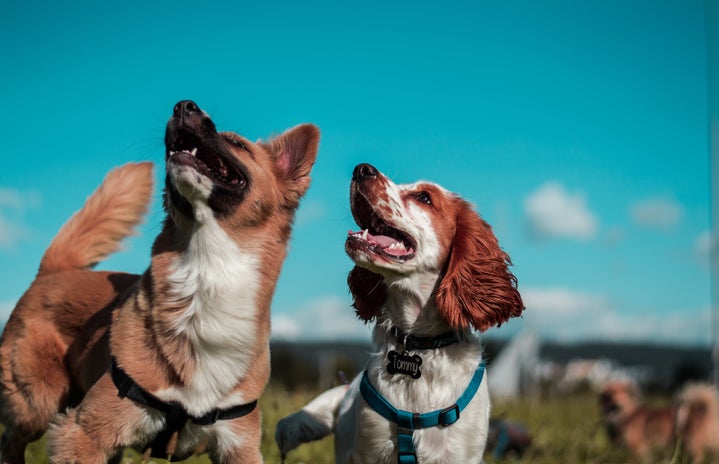For thousands of years, dogs have been very vital to the survival of human civilizations. Whether that is by being used for hunting, as guard dogs, and in some cases, worshiped and connected to a god. Specifically in Mexico, dogs have been an integral part in not only the history of the country but also the culture. I want to take a closer look at some of the native dogs of Mexico and break down their importance to better understand their role in the country’s culture.
Xōlōitzcuintli
Obviously, I am going to start with the beautiful, mostly hairless, national dog of Mexico, the Xōlōitzcuintli. If you’ve never heard of this majestic dog, you’ve probably seen it in many different films, including the Disney movie, Coco which shows the Xōlōitzcuintli as Miguel’s companion, Dante. But besides being adorable Disney sidekicks, this dog is considered one of the oldest dog breeds in the world with archaeological evidence dating the breed to more than 3,500 years ago.
The Xōlōitzcuintli gets its name from two different Nahua, the language of the Aztecs, words. Xolotl, the Aztec god of lightning and death, and itzcuintli, which means dog. So their name is quite literally the dog of Xolotl. The Aztecs believed that this dog was created by the god Xolotl to guard the living and to guide the souls of the dead through Mictlan, the underworld, which can be dangerous. The Xōlōitzcuintli was a valuable hunting companion for the Aztecs and was sometimes sacrificed and consumed during religious ceremonies because it was believed that they had healing capabilities when consumed. Then when the Spanish conquered the Aztec empire, they gained a love for the taste of Xōlōitzcuintli so much that nearly ate the dog into extinction. Thankfully, after the dog was recognized by Mexico in 1956 the dog experienced a revival, especially in those that are allergic to dog fur since the Xolo has no hair.
This beautiful animal continues to be a very important part of Mexican culture today. They are a major part of the annual Dia de Los Muertos celebration, since it is still believed that they guide the dead to the afterlife. Famous Mexicans like Frida Kahlo and Diego Rivera believed that Xōlōitzcuintlis are key to life, adding them into many of their paintings. The legacy of the Xōlōitzcuintli will continue to live on in Mexico, not only because of their title as the national dog but also because it connects to the native ancestors of the land. These dogs have been a part of Mexico quite literally since the beginning and I believe that they always will.
Chihuahua
If I am honest, I have a bias towards the Chihuahua because my family is from Chihuahua, Mexico. However, my bias isn’t too unwarranted because this small furry friend has been a major part of Mexican culture for centuries. These majestic little dogs have been used in films for years; most notably films like Beverly Hills Chihuahua or Chihuahua: The Movie. And while there is much debate over the Chihuahua’s origins, there is evidence that the dog can be traced back to the 1400s in the Aztec empire.
The ancestors of Chihuahuas came to the Mexica either through Chinese merchants or the Toltecs, either way, these little dogs were beloved by Mexica nobles. The Aztecs loved these dogs so much that they believed that when an Aztec noble died, it was necessary for them to kill a Chihuahua and bury it with the body of the human. They believed that the spirit of the dead Chihuahua would act as a guide through the afterlife for the soul of the dead noble. The human spirit needed help swimming across a river into the afterlife and would crawl onto the back of the Chihuahua spirit to reach the heavenly destination in the afterlife. Which is very similar to the role of the Xōlōitzcuintli in the afterlife. According to Kyle Potts, president of the Chihuahua Club of America, at some point in the Aztec empire, the dog was used almost as a form of money. They were used to trade for valuables and due to this, at one point almost every household had one.
Now, Chihuahuas are considered excellent companions like their ancestors. They are beloved not just by Mexican households but by households around the world. In the 1800s people in the United States began to take interest in Chihuahuas, and by 1904 the dog was officially recognized by the AKC, American Kennel Club. This propelled the breed’s popularity around the world but they are still key to Mexican culture. These dogs are iconic symbols of Mexican charm and spirit which has made them a crown jewel of pop culture.
Calupoh
The least known breed out of the ones in this article, the Calupoh, also known as the Mexican wolf-dog, has a very extensive history in the country. This beautiful dog’s ancestor is the “Loberro” in the Aztec and Toltec empires, just like the Xōlōitzcuintli and the Chihuahua. The Loberros were the result of cross-breeding between dogs and Mexican gray wolves. This was a purposeful hybridization to create revered animals bearing the dual spiritual significance of the wolf as a symbol of war, night, the underworld and power, and the dog, as a symbol of rain, agriculture, good fortune and fertility. This dog was considered to have high spiritual importance and was used in sacrificial ceremonies to communicate with the gods, they were used as gifts to nobility, and as emblems of protection by warriors.
Unfortunately, unlike the Xōlōitzcuintli and the Chihuahua, the Loberros did not survive due to urbanization, interbreeding, as well as the loss of traditional cultural practices. It is impossible to find the original Loberros now. However, since the mid-1990s extensive research has been done to recover this lost breed. The Calupoh was rescued due to genetic research between dogs and wolves, reviving the cultural and historical breed. Now there are many conservation projects to further protect the Calupoh, various organizations are working tirelessly to maintain the purity of the bloodlines of the Calupoh and promote responsible breeding practices. Educational programs have also been implemented to raise awareness about the breed’s significance in Mexican culture and history.
Thankfully, in 1999 the Federación Canófila Mexicana recognized the Calupoh as the third Mexican dog breed which adds the breed into the protection and conservation forces to keep these vital Mexican dog breeds alive for centuries to come.
These three dog breeds are key to understanding the history of Mexico, and as a dog lover and a Mexican, each one brings me so much joy and comfort. I hope that these dogs are able to stay around for a long long time as they already have so that generations to come will be able to learn from them and enjoy them just as generations before them have been able to.


